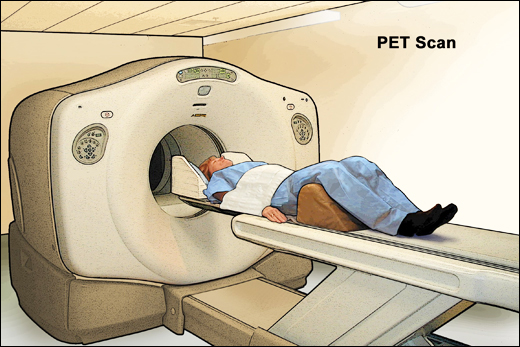PET Scan – Procedure, Uses, Cost and Benefits in Diagnosing Diseases
Abstract
PET scan is an emission tomography scan, an imaging technique where radioactive tracers are used to visualize the tissue of the organ or part of the body. Here in this article, we will discuss the PET scan, how we do it, what is the requirement for this scan, in which conditions, we do this scan, and its procedure. Let’s discuss!

Introduction
PET scan means positron emission tomography scan a medical imaging technique in which radioactive tracers are used to visualize the function of organs and tissues by detecting the emission of the positrons (a positively charged subatomic particle emitted by a radioactive tracer injected into the body, which collides with the electrons in the tissue, creating gamma rays that are detected by the scanner to produce an image of the tissue’s metabolic activity), which helps for the detailed assessment of metabolic activity, this is valuable in cancer diagnosis and staging, where abnormal metabolic rates in tumors can be identified as hot spots on the scan, enabling the clinician to monitor treatment response and detect disease recurrence.
PET scans are often combined with computed tomography (CT) to provide anatomic context, offering a powerful tool for comprehensive disease evaluation across various clinical specialties like oncology, neurology, and cardiology. PET scans provide information on how organs and tissues function by measuring their metabolic activity, not just structure. A small amount of radioactive tracer is injected into the patient, which accumulates in areas of high metabolic activity.
Importance Of PET Scan
PET scans have many uses for diagnosing many diseases, and seeing the condition of the organs, and their tissues, and used to assess cancer, neurological diseases, and cardiovascular diseases, determine if cancer has spread and the size, its help to check the efficacy of cancer treatment and the effectiveness of treatment, it can also be used to evaluate brain abnormalities, such as tumors, memory disorders, and seizures. It can help in diagnosing coronary artery diseases and heart diseases. It can also be used for planning operations, like brain surgery, and coronary artery bypass grafts.
What It Diagnose?
PET scan with radiotracer fluorodeoxyglucose (FDG) is widely used in clinical oncology, FDG is a glucose analog that is taken up by glucose-using cells and phosphorylated by hexokinase. Metabolic trapping of the radioactive glucose molecule allows the PET scan to be utilized.
Cancer
PET Scan can monitor and diagnose cancers like breast, lung, and thyroid cancer, see the spread to other parts of the body, and the presence of cancer cells. To evaluate the treatment, and check the reoccurrence of the cancer. Some cancers that PET scans can help diagnose are breast cancer, lung cancer, thyroid cancer, cervical cancer, Colorectal cancer, Esophageal cancer, brain cancer, and Prostate cancer.
Neurological Conditions
A PET scan is used for the diagnosis of different neurological conditions like Alzheimer’s, Parkinson’s disease, and Huntington’s disease to evaluate brain trauma for bleeding, blood clots, and blood flow, and help brain surgeries for epilepsy.
Psychiatry Condition
For conditions like Schizophrenia, PET scan helps to study the brain neurotransmitter activity, particularly dopamine levels and dopamine receptors, or in Substance abuse.
Heart Conditions
Evaluate heart muscle function and blood flow toward the heart.
Musculoskeletal Imaging
A PET scan can be used for muscle and bone imaging. FDG (fluorodeoxyglucose) is a commonly used tracer for imaging muscles, and NaF-F18 is the most widely used tracer for imaging bones.
Other Condition
Help to see any lung cancer lesions, and help manage and treat lung cancer.
When Is It Recommended?
A PET scan is recommended when there is a condition that affects the brain, heart, or any cancer growth in the body, to rule out the presence and also to see the growth of treatment in the cancer patient. Recommended in various heart conditions like when there is elevated blood flow to the heart muscles, and to see the growth of the treatment. To determine if cancer has spread or how it’s responsible for the treatment, to see the stages of cancer, to determine whether any abscess or lump is cancerous or not, also recommended to identify any lung lesions or masses, to help manage and treat lung cancer, to prevent recurrence of tumors.
For Which Body Part Is PET Scan Advised
PET scan can be advised for the whole body, to evaluate disease, cancer, and other conditions. It can also help assess how well organs are functioning. Highlights abnormal areas, evaluates heart diseases, and is used for neurological diseases, a PET scan for the human brain. PET for bone imaging and muscle imaging, lungs.
Approximate Price
The price of a PET scan depends on the type of scan, city, and facility provided. In India, a PET scan can cost between 10,000- 40,000
- Brain PET scan – costs around Rs 15,000
- Cardiac PET – can cost up to Rs 20,000
- Whole body PET scan – can cost between Rs 10,000-Rs 40,000
- PSMA PET scan for Prostate – can cost between Rs 17,500-Rs 35,000
- F-18 choline PET scan – Can cost between Rs 37,000 and Rs 18,500
- FDG-PET scan – costs between Rs 23,900- Rs 11,950
- DOTA PET CT scan – Can cost between Rs 37,000 and Rs 18,500
- Dopa Brain PET scan – Rs 37,000-Rs 18,500
Conclusion
In the End, we can say we discussed the PET scan where we saw what is PET Scan how it works and its uses, how much it costs, why it is more useful than other imaging tests, what are the possible factors that can affect a person undergoing this imaging test, and which organs and body parts it includes and helps in scanning.
FAQ’s
How Does A PET Scan Work?
PET scan (Positron emission tomography) uses a radioactive tracer to create 3D images of the inside of the body. A small amount of radioactive tracer (Fluorodeoxyglucose) is injected into the vein in the arm, tracer travels through the blood and collects in organs and tissues, The patient lies on the table which slides into the scanner, and then the scanner detects the radiation from the tracer, and a computer creates a 3D image of the area being examined.
Is PET Scan Safer For Diabetic Patients?
Yes PET scan is safe for diabetic patients, but blood sugar levels need to be within a certain range. Avoid vigorous exercise and caffeine for 24 hours before the scan. Eat a diet with high protein and low carbohydrates for 24 hours before the scan. Avoid eating or drinking anything that contains glucose before the appointment. Maintain the glucose within the range, if blood sugar is high, reports will not be correct, if insulin is on the higher side, this will also affect scan results. The total procedure time is approximately 3 hours.
Is A PET Scan Painful?
A PET scan is usually painless, but the patient can feel slight pain while the tracer is injected by taking a prick in the vein of the arm.
Accuracy Of PET Scan
PET scan is very sensitive to detecting small cancerous lesions that other imaging techniques like CT or MRI might miss. A PET scan detects cells’ metabolic activity, allowing for earlier detection of cancerous tissues.
Is There Any Reaction Of The Radioactive Tracer Used In The PET Scan
The reaction by the radioactive tracer used is rare, it may include a mild allergic reaction at the injection site, such as redness, or itching, and in very rare cases, a more severe allergic reaction like hives or difficulty breathing may occur, although this is uncommon and usually managed by medical professionals.




